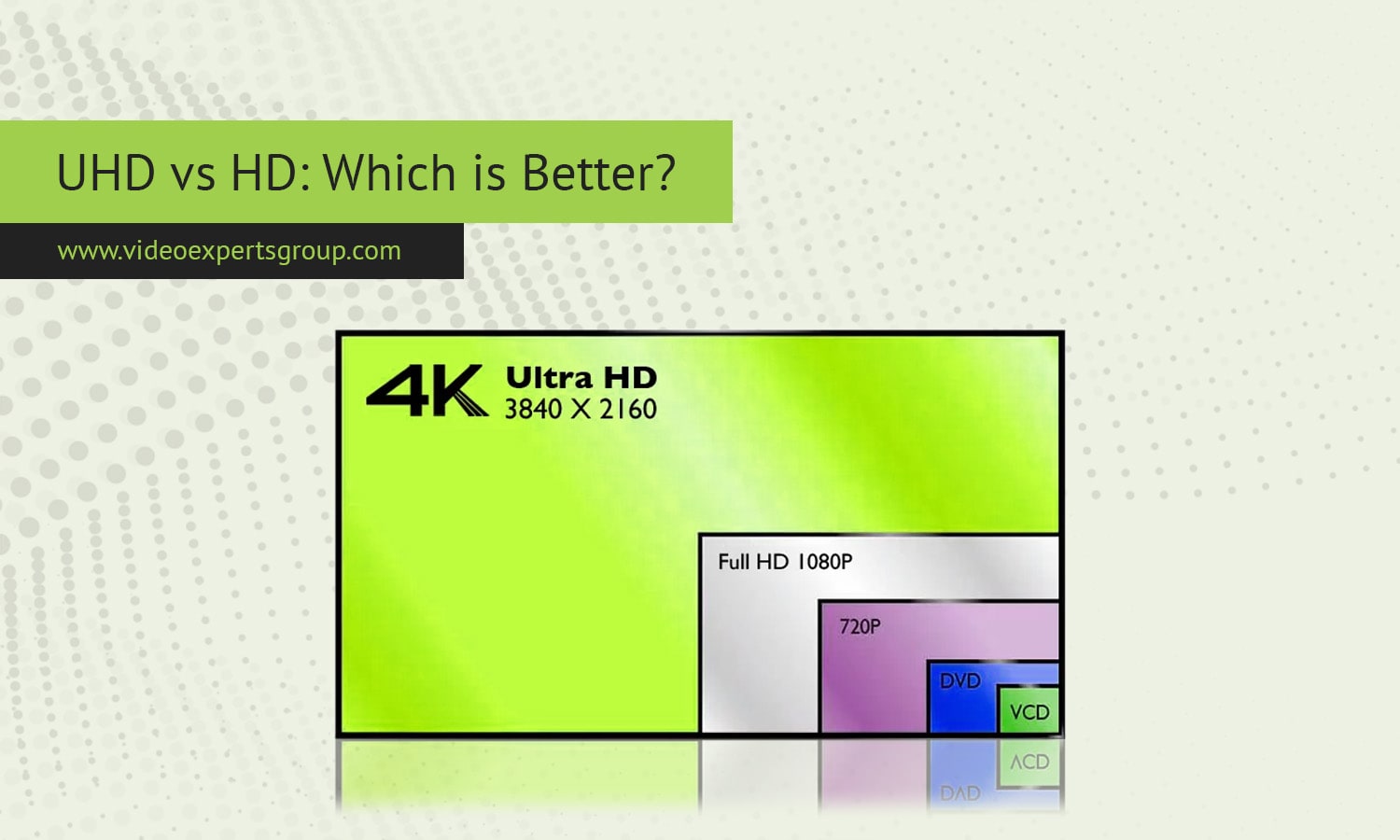When buying a new display, such as a TV, monitor, or even a smartphone, you’ve likely encountered terms like “UHD” and “HD.” But what exactly do these terms mean, and how do they impact your viewing experience? UHD (Ultra High Definition) and HD (High Definition) both refer to screen resolutions, which determine the clarity and detail of the images on your screen. HD offers a good level of detail, but UHD takes it a step further, providing a sharper and more immersive experience. This article will explore the key differences between UHD and HD, how they affect display quality, and help you decide which one is better suited for your needs.
What is UHD?
UHD, or Ultra High Definition, refers to a resolution standard that offers 3840 x 2160 pixels, providing a total of over 8 million pixels on the screen. Often referred to as “4K,” UHD screens deliver four times the pixel density of Full HD (1920 x 1080 pixels). This higher resolution creates a highly detailed and sharp image that is ideal for larger screens, like TVs and monitors, as it minimizes the visibility of individual pixels.
Key Features of UHD:
- Resolution: 3840 x 2160 pixels
- Pixel Density: Four times that of HD
- Picture Clarity: Improved clarity, fine detail, and sharper edges
- HDR (High Dynamic Range) Compatibility: UHD often supports HDR, enhancing color and contrast
Because of these features, UHD is especially favored in home theaters, gaming setups, and professional displays where high clarity and detail are essential. UHD content is now widely available on streaming services and gaming consoles, making it a popular choice for modern entertainment.
What is HD?
HD, or High Definition, typically refers to screen resolutions of 1280 x 720 pixels (standard HD) or 1920 x 1080 pixels (Full HD). HD became the mainstream standard with the rise of flat-screen TVs, as it provided a noticeable improvement in image quality over older SD (Standard Definition) formats. Although HD doesn’t have the same pixel density as UHD, it still offers clear, sharp images that are well-suited for smaller screens and general viewing needs.
Key Features of HD:
- Resolution: 1280 x 720 pixels (HD) or 1920 x 1080 pixels (Full HD)
- Pixel Density: Lower than UHD but still provides a sharp image
- Compatibility: Widely supported on nearly all screens and content types
- Cost-Effective: HD screens and content are generally more affordable than UHD
HD is an excellent choice for everyday use and can deliver a good visual experience on medium to small-sized screens without the need for high processing power or internet speeds required by UHD content.
What's the Difference Between UHD and HD?
While both UHD and HD are designed to deliver clear and sharp images, UHD surpasses HD in several critical areas:
-
Resolution and Pixel Density:
UHD’s resolution (3840 x 2160 pixels) offers four times the pixel count of HD’s 1920 x 1080 pixels, leading to much finer detail and clearer images. This difference is especially noticeable on large screens, where the added pixel density minimizes pixelation. -
Image Detail:
UHD provides better overall picture quality, especially when viewing highly detailed images or close-up shots. UHD screens can reproduce smaller details and textures that HD screens might blur or lose. -
Color and Contrast:
UHD screens often support HDR (High Dynamic Range), which expands the range of colors and contrast. HDR can enhance bright scenes and deepen dark areas, making for a more vibrant and realistic picture. -
Content Availability and Compatibility:
HD content is widely available across all media formats, while UHD content is still expanding. Streaming UHD content requires a faster internet connection, and some UHD displays require compatible hardware, like UHD Blu-ray players or specific streaming devices. -
Cost:
UHD displays and content services are generally more expensive than their HD counterparts due to the advanced technology and enhanced viewing experience they offer.
Which is Better, UHD or HD?
Whether UHD or HD is better depends on the type of content you enjoy, your budget, and the screen size you need.
-
Choose UHD if you’re looking for the best picture quality and have a large screen size, such as a TV in a home theater or a monitor for detailed work like photo editing. UHD will provide sharper, more detailed images, making it ideal for immersive movie watching, high-definition gaming, and professional use.
-
Choose HD if you’re looking for a budget-friendly option or if you’re buying a smaller screen, such as a laptop or smartphone, where the extra pixels might not be noticeable. HD is perfect for casual viewers, everyday use, and smaller screen sizes, offering excellent quality without the added cost and data requirements of UHD.
Ultimately, UHD is considered superior in terms of picture quality, but HD remains a great choice for general viewing needs, especially on smaller or mid-sized screens.
FAQ
Both UHD and HD provide quality viewing experiences, but UHD offers a level of detail and realism unmatched by HD. By considering screen size, content type, and budget, you can choose the one that best matches your viewing needs.
















